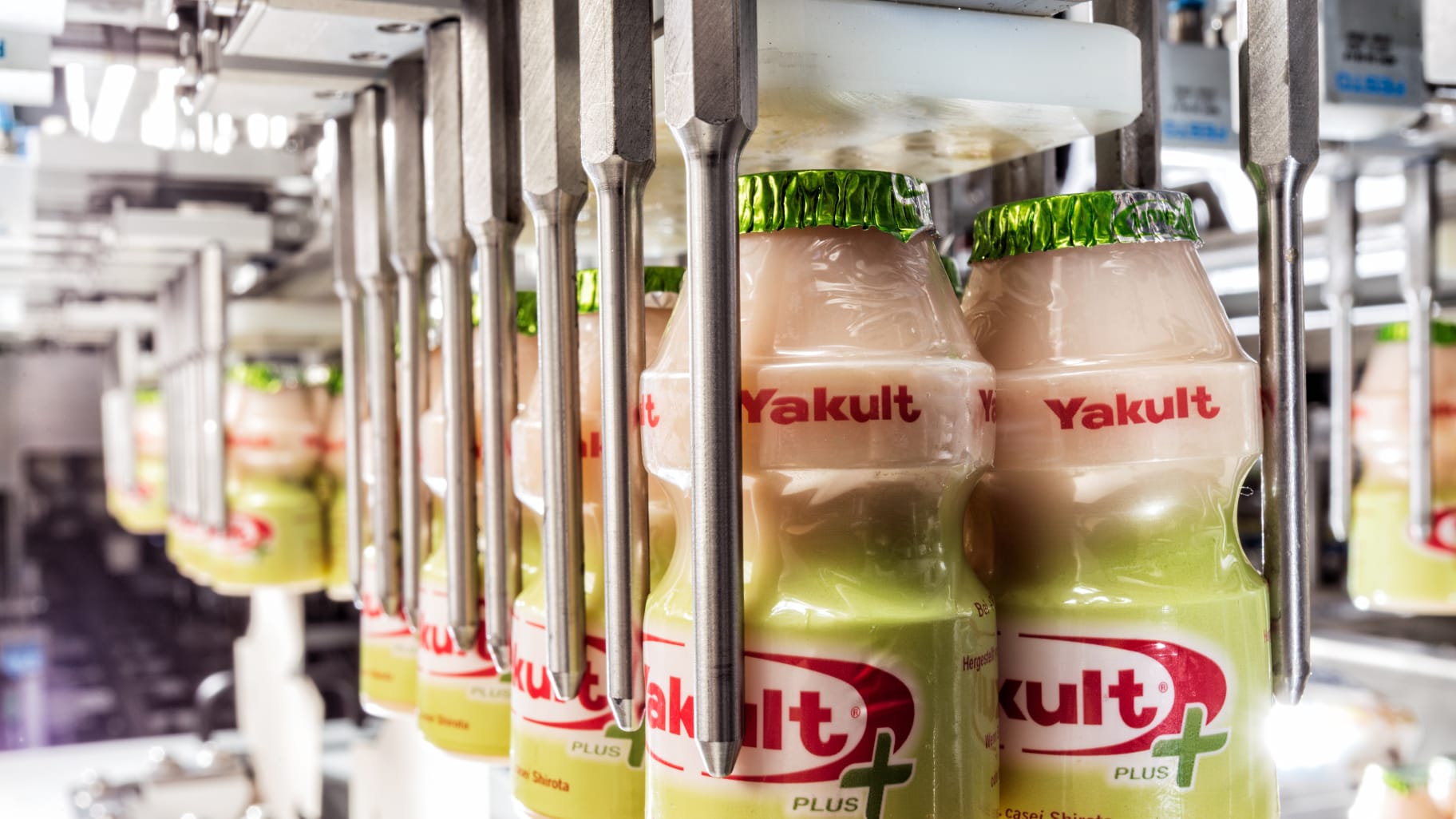Maximum performance in the smallest space
- Packaging 6 or 8 bottles into carton boxes
- Quick format changeovers
- Secondary and tertiary packaging in a single machine
- Compact machine layout
- Highest levels of efficiency
Dairy

Requirements
The Almere plant in the Netherlands supplies eleven European countries with Yakult. Yakult wanted to switch from film to cardboard for secondary packaging targeted to this market. The requirements for the packaging system were numerous: in addition to high performance and a predefined, small footprint, flexible format options were also on the wish list. Additionally, the machine had to optionally be capable of inserting customer information leaflets between the bottles in the cartons.
Solution
Schubert’s engineers achieved maximum performance in the smallest of spaces with a combination of several F2 robots, four Transmodul sections and image recognition systems. The system packs 720 Yakult bottles per minute into easy-to-open cardboard boxes. The fast format changeover supports secondary packaging in either 6 or 8-packs.

Together with the experts from Schubert, we developed an environmentally friendly and extremely practical packaging solution.
Ronald Jacobs
Plant Manager at Yakult Europe
Distributing bottles from a single-path infeed to two paths at high speed
The carton blanks are picked by F3 robots from the magazine and placed in a horizontal position. The F2 robots take these blanks, glue them via the gluing station, push them through the folding unit and place them directly onto a Transmodul, which transports the erected cardboard boxes to the next production steps.
At the same time, the transport chain feeds the bottles from the upstream process into the TLM system. A grouping chain distributes the bottles on two tracks into the two infeed screws, which deliver the products individually to two toothed belt conveyors. From there, the bottles pass into the receiving areas where two F2 robots each remove 48 bottles from the belt and place them on a Transmodul in the system’s second Transmodul section. This Transmodul transports the bottles to two further F2 robots. These pick up 24 bottles at a time, group them together according to carton size and place them into the erected carton boxes on the first Transmodul section.
Depending on the format, either 12 or 16 cardboard boxes are filled simultaneously. Optionally, a leaflet is inserted between the bottles before a camera checks the packages for completeness and these are closed by the next two F2 robots. The closing robots place the cartons on a Transmodul in the system’s third Transmodul section, where a printer marks the cardboard boxes with shelf life information. The closed cardboard boxes are then placed into 5-unit display cartons by two further F2 robots. The display cartons are erected in the system similarly to the cardboard boxes and transported via a fourth Transmodul section to the filling area. Schubert solved the upward discharge of trays with an integrated elevator. Another special feature is the central glue refilling station for erecting and closing the boxes.

Depending on the order selected, the small bottles are pre-grouped into formations of 6 or 8.

The F2 robots place the pre-grouped formats in the erected cardboard boxes.

The glue for erecting and closing the boxes is replenished via a central glue refilling station.

A camera checks the cardboard boxes to make sure they are complete before they are closed.

The filled and closed cardboard boxes are packed in display boxes in the same system.